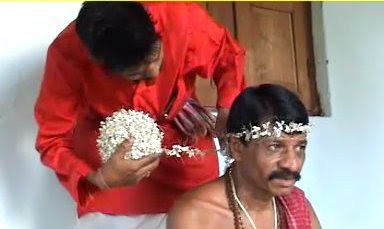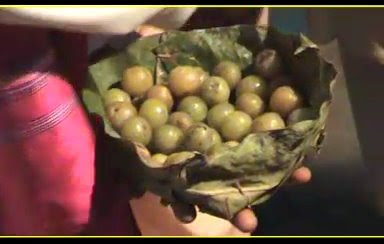Faagun Mandai
A district of Baliadela mountains, a district of Saathdhaar waterfall, a district of confluence of river Shankini and Dankini, a district of ancient city of Barsur, a district of divine pilgrim(shaktipeeth) of Goddess Danteshwari…..Yaa, I am talking about Dantewada….Dantewada is one of the important centre of Tribal unity and integrity. Right from the pre-historic period, Dantewada has led the foundation of harmony between different groups of tribes. In this way, they use to gather together for preaching the almighty goddess of power, Maa Danteshwari. This auspicious occasion, this auspicious congregation, this divine celebration is called Faagun Mandai.
Where and How to reach?
Dantewada is around 88kms far from the divisional head-quarter Jagdalpur and around 388kms away from Raipur. It is just 11km far from NH-16 towards Bailadela from Geedam. It is also approachable through rails by Vishakapatnam-Kirandul Passenger. We can reach here any time throughout the year.
For the ease of tourist, for their boarding and lodging, some good rest houses and guest houses has been made by forest department. The board of CG tourism has built a beautiful guest house on the way between Geedam and Dantewada.
Historical and Traditional Importance:
Madhota Tarla, renamed as Dantewada by the great dynasty of Kaktiyas, after defeating the Nagwanshi dynasty and conquering the southern part of Bastar kingdom, they led the foundation of Maa Danteshwari temple at the confluence of river Shankini and Dankini. Earlier the prayer of Goddess was being done by Royal family only, but later on the late 13th century, it got open for all the visitors and worshippers. In the same way, in the 13th century, the celebration of “Holi” incorporated and assimilated many tribal customs and tradition along the worship of Goddess Danteshwari and got a entire new format and a new name called Faagun Mandai.
Importance of Mandai:
In Bastar division, there is a unique importance of Mandai. It is a sort of cultural celebration. Normally Mandai start after Deepawali and last upto April and celebrated in different parts of this division. In some places, it is celebrated for a week, while in some places it is celebrated only for one or two days. Normally the first day is meant for the worship of respected god/diety, the next day is meant as the stale celebration of the previous day where they gather together, dance and enjoy.
Faagun Mandai and Its important days:
Sometime the customs of Tribes go parallel with the actual tradition and customs of the common hindus, sometime they go entirely different. It may be a coincidence that the ending customs of Faagun Mandai fall on the same day along with “Holika Dahan”, but rest customs are entirely different.
Faagun Shukla Shashti- KALASH STHAPNA
It’s the day for the worship of Maa Danteshwari and Mata Shailputri. From Maa Danteshwari temple, the “Chhatra” of Goddess is taken to Mendka-Dobra(a kind of plane ground used for all rituals) and is worshipped there. On this first day, the pooja of Mata Gauri and Lord Ganesh is also done. Then they perform “Kalash-sthapna” by the ingredients of lali, paddy, rice and turmeric.
Here, Phool Pagdi rashm is also performed, where is Bandharin flower is used to make a traditional crown called “phool-pagdi”. After wearing this “pagdi”, priest goes to Lord Narayan temple nearby and bring back the palanquin of Goddess, after offering food to Goddess(mata ko bhog lagana).
Faagun Shukla Shaptmi- TAADPHALANGGA-DHUNI
In the morning, Pooja starts from the worship of Goddess Brahmacharini mata. Like the first day, the palanquin of Goddess Danteshwari is brought to Narayan temple with the guard of honour. Then priest take “taad-phalangga”(a leaf of Palm tree) and worship at pond nearby. In all this process, there person are very important namely the head priest, the asstt. priest and bara-lankawaar(means different twelve persons including tribes) .
Faagun Shukla Ashtmi- KHURKHUNDNI
The day starts with the worship of Mata Chandraghanta. Its is called “khurkhundni” because it is the day when Goddess Danteshwari is informed about other deities like Hinglajin, Dhawdain, Totakamin, Gallepalin, Ganganati e.t.c. All this palanquins are then taken to Mendka-dobra, then Goddess Danteshwari is invited to Mendka-dobra by anyone tribe.
Faagun Shukla Navmi- NACH-MANDMI
The day begins with the pooja of Mata Kushmanda, wearing flower crown, priest comes to Narayan temple with all deities(palanquins).After feeding Mata, all villagers return back. Then bara-lankawaar dance and celebrate this day.
Faagun Shukla Ekadashi- LAMHA-MAAR
The day starts with the worship of Skand mata, then the palanquin of skand mata, Goddess Danteshwari, and Maa Bhuvneshwari are brought to Narayan temple and then they are given honour of salutation. After this, the palanquins are brought back.
source: www.dantewada.gov.in
In the night, Gayta tribal man becomes a rabbit(lamha) , the katiyar tribe becomes hunter, then they perform the act of catching prey. This act is done two times, one inside of Goddess Danteshwari temple and other in front of Narayan temple.
Faagun Shukla Dwadashi- KODRIMAAR
The day begins with the Pooja of Maa Katyayni, Goddess Danteshwari, and Maa Bhuvneshwari. After Phool-pagdi rashm, “Kodromaar” starts where the Kumar tribe dance and comes to Mendka-dobra with two buckets full of Pooja materials.
In the night, again they perform one act where Gayta tribe becomes prey, Nayak tribe become hunter and Yemla tribe become sirha. Here, they trap their prey by nets.
Faagun Shukla Trayodashi- CHITALMAAR
The day starts with the pooja of Maa Kaalratri. In the night, In an act, Gayta tribe becomes prey(Chital means deer) and Yemla and nayak tribe become hunter.
Faagun Shukla Chaturdashi- GAURMAAR
The day starts with the pooja of Mata Gauri. This day, Royal family comes for worshipping. In the night, in an act, Samrath tribal man become prey(Gaur means wild buffalo) and Goddess danteshwari priest family man become hunter.
Faagun Shukla Poornima- AWARAMAAR
This is the day of Awaramaar custom and Holika-dahan. The day begins with the pooja of Maa Siddhidatri. Then sobha-yatra of all deities is performed. At the time of retreat of deities, all the tribes and villagers play hitting each other by Awla. Hence it is names as Awaramaar.
Then the branch of palm tree is taken to Log of woods of Holi and kept along with the wood logs and they are worshipped by the priest and Bara-lankawaar and then they perform ‘Holika Dahan” and greet each-other and sing Faag songs.
Faagun Shukla Pratipadaa- PADUKA-PUJAN & RANG-BHANG
In this last day, all followers, visitors and tribes play holi with each other, inviting Goddess Danteshwari and all other deities. In the last, they bath at the bank of confluence of river Shankini and Dankini. Then the pooja of Bhairam baba is performed.
source: www.dantewada.gov.in
Finally, the last day comes for the retreat of all deities. It’s a emotional farewell.
Conclusion: Here you saw, how these tribes are attached to their traditions and values. One contrasting feature more, what I noticed is that, these tribes have great affection for nature and its creatures, yet they depend on hunt for their livelihood, hence they offer their prayer to Goddess by giving a good hunt in order to make their clan pleased with the blessings of Goddess.


























